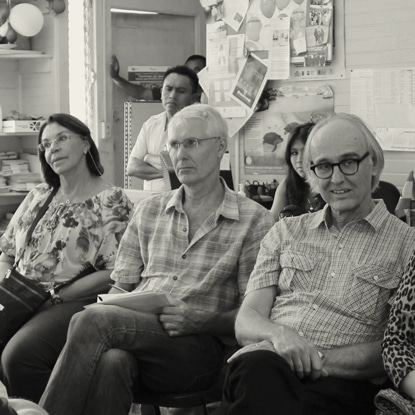The SALOME study (Study to Assess Longer-term Opioid Medication Effectiveness), is a clinical trial being conducted in Vancouver, BC. The study compares the effectiveness of six months of injectable diacetylmorphine (heroin) with six months of injectable hydromorphone (Dilaudid, a licensed medication) and the effects of switching from injectable to oral heroin or Dilaudid.
SALOME began active recruitment in December, 2011. Participants will be in the study for one year, followed by a 1-month transition period where they will be encouraged to, once again, take part in conventional treatments such as methadone maintenance, drug-free treatments, and detox programs (treatments that have proven to be ineffective for these participants).
SALOME is a follow-up to the NAOMI study, which tested whether heroin-assisted treatment or methadone is more effective in improving the health of chronic and long-time opiate users. The repeated failure of treatment efforts for participants is in fact part of the criteria for selection of participants in SALOME, as was the case in NAOMI.
Many of the first participants will be exiting the clinical trial now and over the next two months (February and March).
Both studies provide an immense value not only to our scientific understanding of heroin dependence, but also to those individuals who have participated in the research. But as with NAOMI, the current study protocol of SALOME puts research participants at an increased risk by failing to have an adequate “exit strategy” in place for when research is complete.
Each of the research participants has previously failed on methadone maintenance treatment and other conventional treatments before entering the study, yet if the study shows that they are benefiting from diacetylmorphine when the research is concluded, they will not be allowed to be maintained on the drug that is benefitting them. Instead, they will be returned to methadone or other conventional treatment options.
This practice, as demonstrated in international research and through the accounts of participants in the NAOMI study, produces real harms to members of our community, and we cannot tolerate it being repeated during the SALOME study.
Canada remains the only country conducting a prescription diacetylmorphine (heroin) trial that has failed to provide diacetylmorphine to the research participants at the end of the trial.
We feel that research testing new methods of treatment for the harms of addiction is valuable, but must be conducted in ways that effectively address the continuing treatment and support for the individual participants in the research if the intervention proves successful.
By not putting in place an adequate exit strategy, the study is putting marginalized and vulnerable people at risk.
We request that Providence Health Care take immediate steps to provide ongoing diacetylmorphine treatment for participants concluding the SALOME study by applying for and supporting Special Access to diacetylmorphine, and begin planning for a pilot program for providing this treatment to the community at large.
How you can help:
On behalf of the NAOMI Patients Association (NPA), a community letter directed to Providence Health Care in support of heroin assisted therapy is circulating. The letter is available here.
For more information please contact Susan Boyd, on behalf of NAOMI Patients Association at naomipatientsassociation@
To learn more about the NPA click here.







 At a recent meeting of the
At a recent meeting of the 

